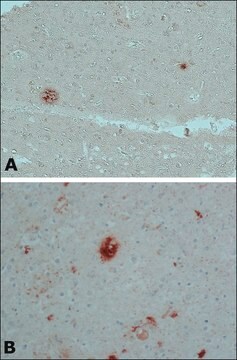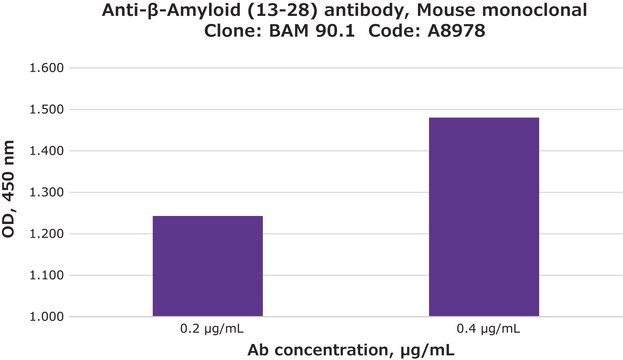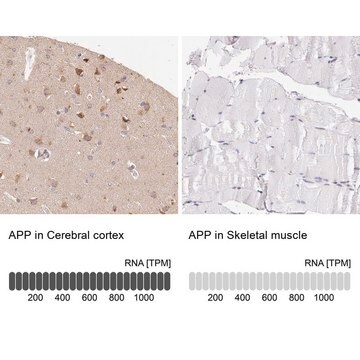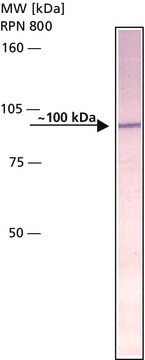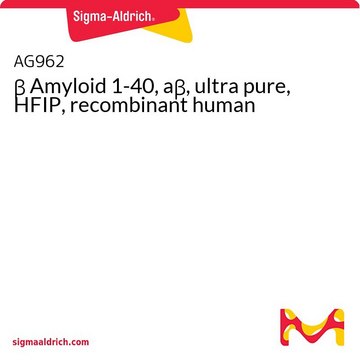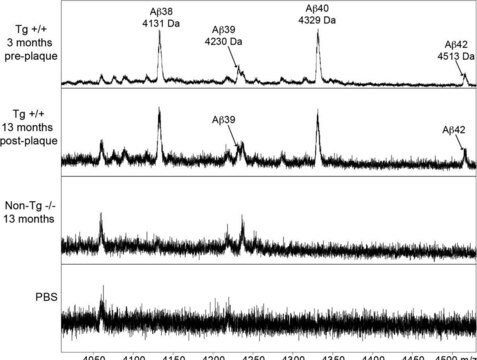A8326
Anti-Beta (β)-Amyloid antibody

rabbit polyclonal
Synonym(e):
Anti-AAA, Anti-ABETA, Anti-ABPP, Anti-AD1, Anti-APPI, Anti-CTFgamma, Anti-CVAP, Anti-PN-II, Anti-PN2, Anti-alpha-sAPP, Anti-preA4
About This Item
Empfohlene Produkte
Produktbezeichnung
Anti-β-Amyloid Protein (1-40) antibody produced in rabbit, whole antiserum
Biologische Quelle
rabbit
Konjugat
unconjugated
Antikörperform
whole antiserum
Antikörper-Produkttyp
primary antibodies
Klon
polyclonal
Form
liquid
Enthält
15 mM sodium azide
Speziesreaktivität
human
Erweiterte Validierung
independent
Learn more about Antibody Enhanced Validation
Methode(n)
immunohistochemistry (formalin-fixed, paraffin-embedded sections): 1:100 using human Alzheimer’s disease (AD) brain tissue
indirect ELISA: 1:4000-1:8000
UniProt-Hinterlegungsnummer
Versandbedingung
dry ice
Lagertemp.
−20°C
Posttranslationale Modifikation Target
unmodified
Angaben zum Gen
human ... APP(351)
Allgemeine Beschreibung
Immunogen
Anwendung
- immunocytochemical localization of Aβ peptides
- immunocytochemistry
- immunoprecipitation
- focused ultrasound-microbubble enhanced antibody delivery (FUS-MB)
Biochem./physiol. Wirkung
Rabbit Anti-β-Amyloid Protein (1-40) antibody does not stain control sections of normal brain tissues.
Physikalische Form
Haftungsausschluss
Sie haben nicht das passende Produkt gefunden?
Probieren Sie unser Produkt-Auswahlhilfe. aus.
Ähnliches Produkt
Lagerklassenschlüssel
10 - Combustible liquids
WGK
WGK 3
Flammpunkt (°F)
Not applicable
Flammpunkt (°C)
Not applicable
Hier finden Sie alle aktuellen Versionen:
Besitzen Sie dieses Produkt bereits?
In der Dokumentenbibliothek finden Sie die Dokumentation zu den Produkten, die Sie kürzlich erworben haben.
Kunden haben sich ebenfalls angesehen
Unser Team von Wissenschaftlern verfügt über Erfahrung in allen Forschungsbereichen einschließlich Life Science, Materialwissenschaften, chemischer Synthese, Chromatographie, Analytik und vielen mehr..
Setzen Sie sich mit dem technischen Dienst in Verbindung.



